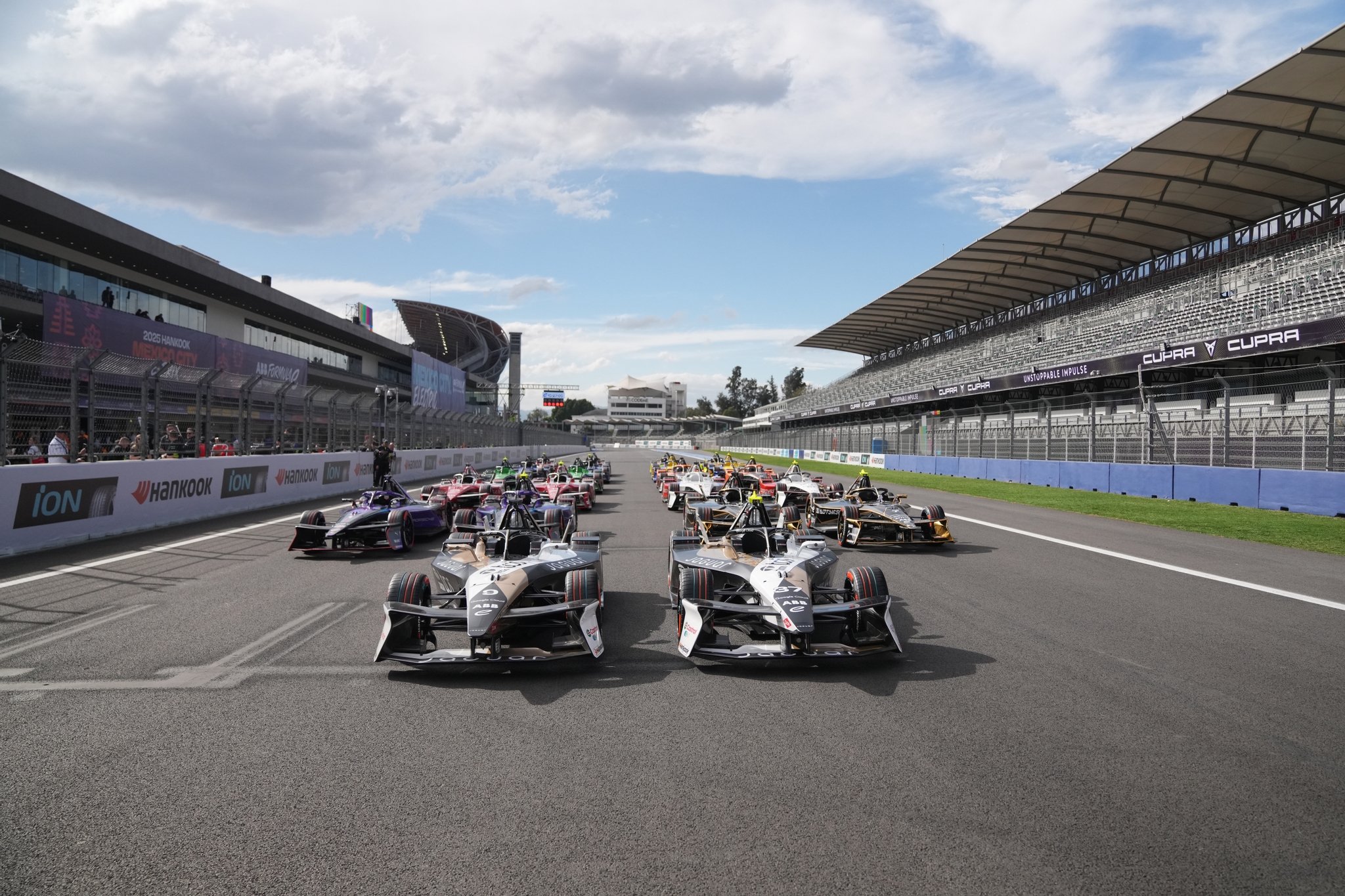Now 11 seasons in, Formula E has come a long way from its sometimes chaotic early days and those mid-race pitstops to change cars. Car swaps went away a long time ago, but when the series gets back to racing next month in Jeddah, Saudi Arabia, the mid-race pit stop will be back. Except this time, the cars will be quickly recharged by powerful 600 kW fast chargers.
The new race feature, which Formula E is calling "pit boost," is a 30-second pitstop, during which time the car receives a 600 kW fast charge—more than twice as much power as a Tesla Supercharger—that adds 10 percent (3.85 kWh) to the battery's state of charge. It's mandatory for every car in the race, but a team is only allowed to charge one of its two cars at a time and only within a specified window of time during the race.
Some people are probably going to be unimpressed with the length of the stops—while they're shorter than you might see at a prototype stop at Le Mans or Daytona, you also won't see mechanics running around changing tires. We're also talking an order of magnitude longer than a current Formula 1 pitstop, which will no doubt be used as ammunition by Formula E's detractors, just as the lap-time comparisons are.
But the laws of physics are what they are. You can only safely put so much energy into a battery in a given time. Any recharge of a significant percent of the battery's state of charge would take several minutes, and that's really not conducive to an entertaining sprint race. (And it's not like the TV director would spend the entire time focusing on a car in the pits instead of all the other cars racing.)
Trying new stuff
Pit boost joins attack mode in the Formula E box of tricks. The sport has never been afraid to try new things as a way to entertain the fans, and although not every experiment has been a raging success, others cannot be written off as failures.


 Loading comments...
Loading comments...
